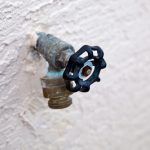Should I Adjust the Water Temperature on My Water Heater?
When it comes to the water heater, there are several questions that a homeowner is bound to have. For example, what are the water heater safe temperature ranges when adjusting my water heater’s thermostat? It can be hard to know if you should adjust the water temperature on your water heater, but this guide is here to help.
While there are a few different points of view on this matter, it is possible to cut costs without using your water heater’s thermostat. Let’s take a closer look at the following tips and pointers so that a homeowner can enjoy added savings without making any major adjustments.
What’s the Lowest Possible Temperature?
There is a certain balancing act that needs to take place in these instances. If the thermostat is set too low, the water heater can turn into a breeding ground for all sorts of dangerous forms of bacteria. On the other hand, the thermostat cannot be set too high. This could lead to unwanted scalding once the new temperature has taken hold.
As a rule of thumb, 120 degrees Fahrenheit is the lowest temperature that can be allowed. The US Department of Energy concurs as this is also their recommended setting. At this temperature, a wide range of pathogens can be killed off before they have a chance to affect the homeowner and their loved ones. On the other hand, the Occupational Safety and Health Administration recommends setting the water heater to 140 degrees Fahrenheit.
The difference lies in the immune system of the residents. If everyone in the home has a strong immune system, 120 degrees Fahrenheit is an acceptable temperature. If there are any concerns in this regard, 140 degrees Fahrenheit is the better bet. At 140 degrees, scalding becomes more of a concern, but fortunately, there is a better way.
Anti-scald valves can be installed at the point of contact with the water. These valves ensure that the water never leaves the tap at 140 degrees Fahrenheit. These installations can be tricky, so be sure to speak with an established plumber about the project.
Energy Efficiency Tips
There is no need to fret about heightened costs once the temperature has been raised. Obviously, keeping one’s family safe from potentially harmful pathogens is far more important than worrying about energy costs. Luckily, families can cut costs without having to utilize their water heater’s thermostat in the process. For starters, showers can be cut shorter and the dishwasher can be used instead of handwashing.
Homeowners can easily install pre-cut pieces of insulation that have been crafted for their pipes and hot water heater. In an absolute worst-case scenario, the water heater itself could need to be replaced. On average, a water heater will last anywhere from eight to twelve years, as long as it has been properly maintained.




